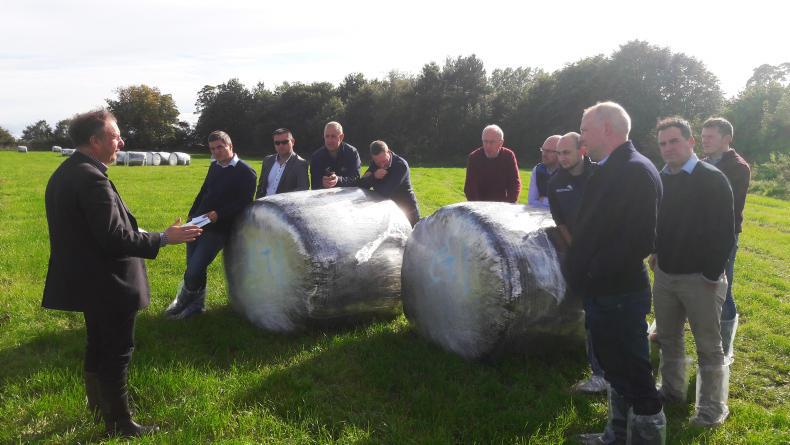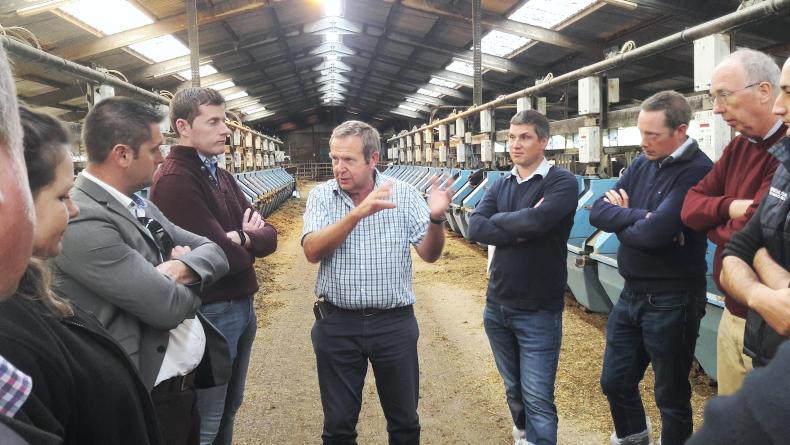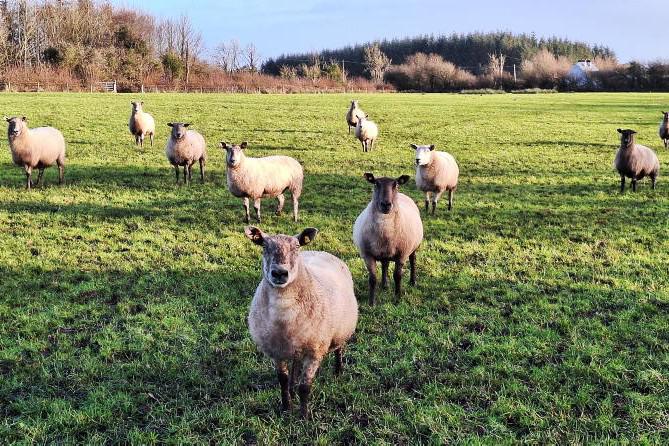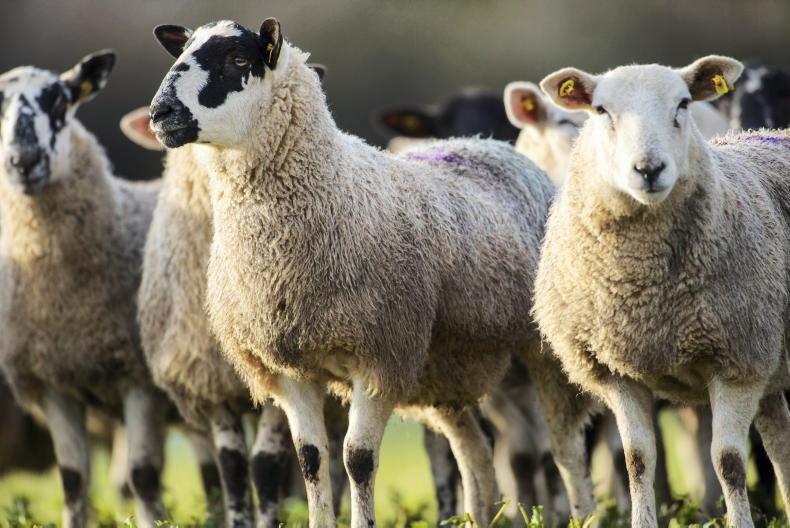The Scotland’s Rural College research farm is home to the world’s longest running dairy genetics study – the Langhill herd. This 200-cow indoor system is divided into either high or standard genetic merit cows.
Within these groups, the farm is currently looking at two different feeding systems, either high energy or standard energy diets.
The high energy diet sees a 60:40 concentrate to forage diet offered to cows. The average concentrate intake on this diet is between 4.5t and 5t/cow/year.
At the farm visit farm manager Hugh McClymont told the visiting Irish Fertiliser Association group that there was a huge difference between the high and standard genetic merit cows.
On the high energy diet, animals averaged 12,295l or nearly 980kg milk solids, compared to the standard group at 10,500l. On the standard energy diet, the high genetic merit group averaged 10,329l while the standard group managed 8,669l, all on a three times per day milking schedule.

Irish visitors at the individual feed intake unit for the Langhill herd
Decision making
Dr Holly Ferguson outlined to the group that there is a huge focus on data-driven decision making on the farm. The cows are milk quality tested by two independent companies and are weighed three times a day on exiting the parlour.
They also walk over a step matrix pressure plate to help identify early signs of lameness. As well as this, cows are fitted with pedometers to measure step count and lying time. Any change in these will flag potential lameness issues. The cows also go through a footbath daily, again on leaving the milking parlour.
Both feed and water intake are individually measured in the herd. Body condition score and locomotion scores are carried out monthly on the farm.

Water intake is individually recorded
Soil structure
The group also heard from Dr Paul Hargreaves, a grassland researcher, on some of the latest soil structure and compaction work being carried out on the farm.
In a three-year study designed to measure the impact of both livestock and machinery on soil compaction, fields were subjected to either cattle grazing or a weighted machinery pass in late October.
Hargreaves said that this was similar to on-farm conditions where the farmer may have tried to get one extra grazing in the back end of the year.

Members of the Irish Fertiliser Association hearing from Dr Paul Hargreaves at SRUC Crichton farm, Dumfries, Scotland.
It wasn’t until year two of the study that grass yields were effected, with a 6% reduction on the cattle compaction plots and 10% on the machinery.
By year three, the reduction in grass yield had risen to 11% and 14% respectively.
The Irish Fertiliser Association study tour continues on Tuesday with a visit to Scottish Environmental Protection Agency to hear about its catchment study, followed by a visit to a local beef farm.
Read more
SRUC joins up with US university on beef research
Climate change degrees launched at SRUC
The Scotland’s Rural College research farm is home to the world’s longest running dairy genetics study – the Langhill herd. This 200-cow indoor system is divided into either high or standard genetic merit cows.
Within these groups, the farm is currently looking at two different feeding systems, either high energy or standard energy diets.
The high energy diet sees a 60:40 concentrate to forage diet offered to cows. The average concentrate intake on this diet is between 4.5t and 5t/cow/year.
At the farm visit farm manager Hugh McClymont told the visiting Irish Fertiliser Association group that there was a huge difference between the high and standard genetic merit cows.
On the high energy diet, animals averaged 12,295l or nearly 980kg milk solids, compared to the standard group at 10,500l. On the standard energy diet, the high genetic merit group averaged 10,329l while the standard group managed 8,669l, all on a three times per day milking schedule.

Irish visitors at the individual feed intake unit for the Langhill herd
Decision making
Dr Holly Ferguson outlined to the group that there is a huge focus on data-driven decision making on the farm. The cows are milk quality tested by two independent companies and are weighed three times a day on exiting the parlour.
They also walk over a step matrix pressure plate to help identify early signs of lameness. As well as this, cows are fitted with pedometers to measure step count and lying time. Any change in these will flag potential lameness issues. The cows also go through a footbath daily, again on leaving the milking parlour.
Both feed and water intake are individually measured in the herd. Body condition score and locomotion scores are carried out monthly on the farm.

Water intake is individually recorded
Soil structure
The group also heard from Dr Paul Hargreaves, a grassland researcher, on some of the latest soil structure and compaction work being carried out on the farm.
In a three-year study designed to measure the impact of both livestock and machinery on soil compaction, fields were subjected to either cattle grazing or a weighted machinery pass in late October.
Hargreaves said that this was similar to on-farm conditions where the farmer may have tried to get one extra grazing in the back end of the year.

Members of the Irish Fertiliser Association hearing from Dr Paul Hargreaves at SRUC Crichton farm, Dumfries, Scotland.
It wasn’t until year two of the study that grass yields were effected, with a 6% reduction on the cattle compaction plots and 10% on the machinery.
By year three, the reduction in grass yield had risen to 11% and 14% respectively.
The Irish Fertiliser Association study tour continues on Tuesday with a visit to Scottish Environmental Protection Agency to hear about its catchment study, followed by a visit to a local beef farm.
Read more
SRUC joins up with US university on beef research
Climate change degrees launched at SRUC












SHARING OPTIONS